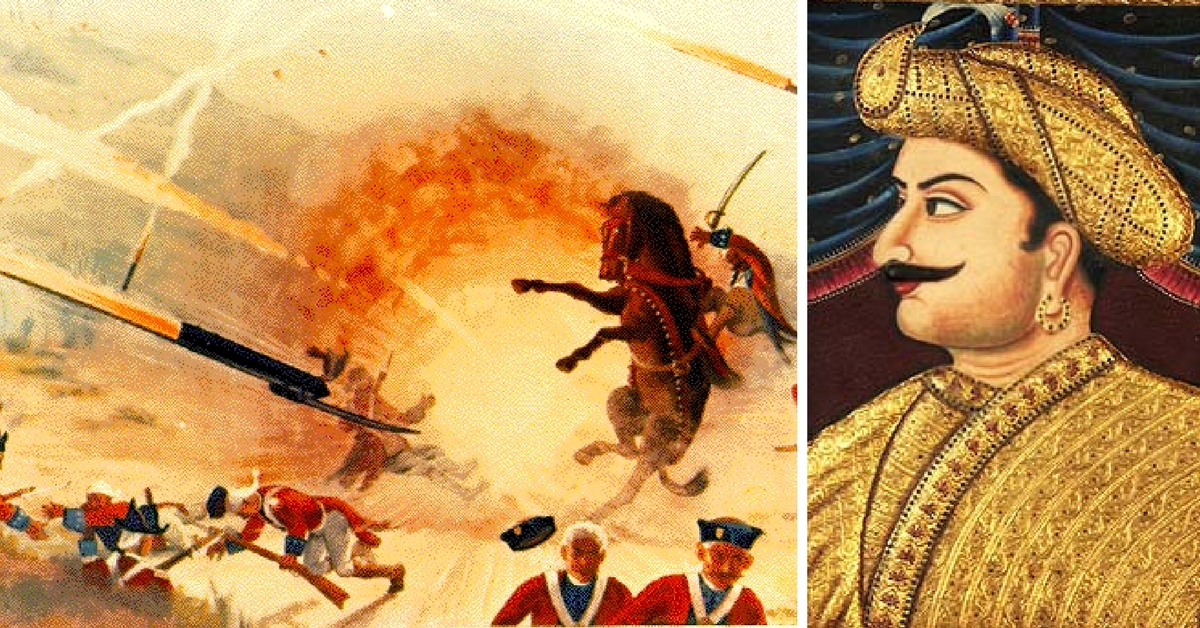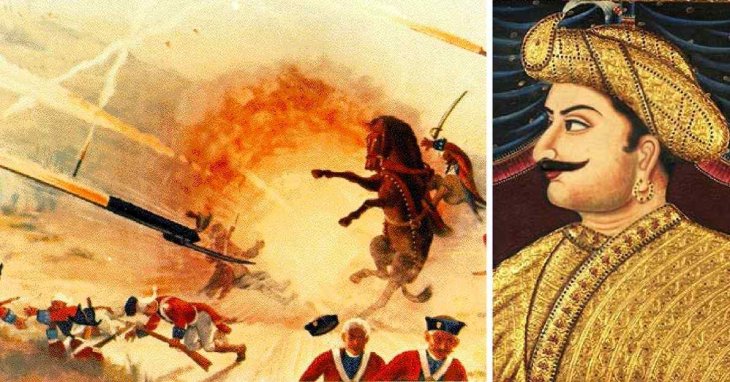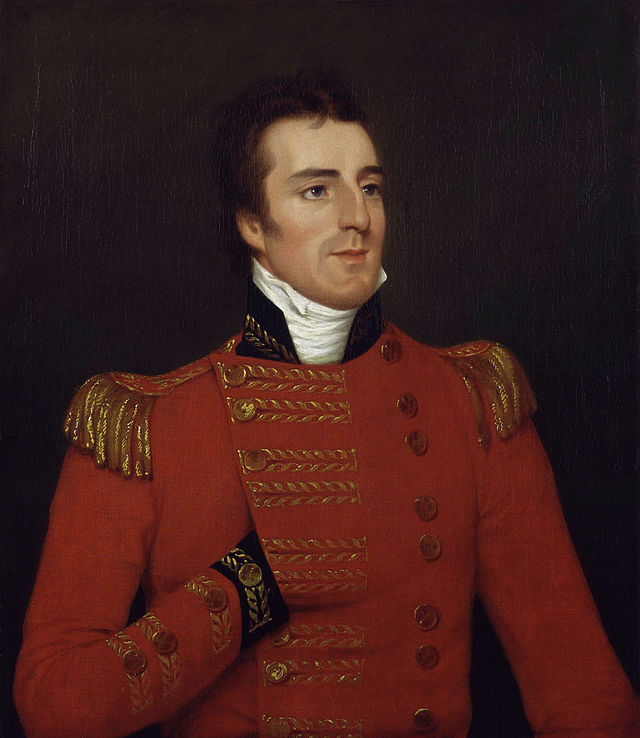The Story Of India's Mysorean Rockets, The World's First Iron-Cased Rockets
Dhir Acharya - Sep 17, 2019

Mysorean rockets were the first iron-cased rockets made for military use, and there were two great Indian men behind this creation.
- Delhi Is The World’s Most Polluted Capital City For Three Years In A Row
- Indian Farmers Install High-Tech, Night-Vision CCTV Cameras To Protect Themselves
- Looking For The Best Electric Bike In India 2021? Take A Look At These
Over 200 years after Tipu Sultan died defending Srirangapattana from the British, his legend still lives. The ‘Tiger of Mysore’ gave the British one of the biggest military challenges they had ever faced in the sub-continent, ending up laying down.

How the rockets were born
He was a legend, but in this article, we will also go through the story of the Mysorean rockets, the world’s first iron-cased rocket to have been deployed successfully in battles.
The Chinese had used rockets in warfare since the thirteenth century, fighting against Mongol invaders while the Mughals used rockets on the battlefield frequently. And by the fifteenth century, the Europeans had begun doing experiments with rockets.
Nevertheless, those rockets were made using flimsy materials such as cardboard, the damage they caused to the enemy can only compare to today’s firecrackers. Consequently, they were no longer used for as a weapon, replaced with cannons as well as other artillery forms.

In fact, it was Hyder Ali that developed the first prototypes of rockets that are sturdier and filled with explosives. Then, his son Tipu refined his innovation by panning, designing and crafting cylindrical iron tubes which supported great compression of the gunpowder stuffed inside, hence greater range (almost 2 kilometers).
Then, Tipu fastened the tubes to bamboo poles or swords to make them stable for greater accuracy. This is our modern rocket’s predecessor. It offered a longer range, greater accuracy, as well as more serious damages than all other rockets in use, and became the world’s best rocket at the time.
In the late 1700s, during the Anglo-Mysore wars, Tipu used Mysorean rockets successfully. Especially, in the Battle of Pollilore in 1781 (part of the Second Anglo-Mysore War), when his rocket corps set fire to the ammunition dumps of the East India Company, the British army had one of the worst defeats it had ever had in India.
How the rockets helped in battles with the British

The British infantry was in shock as they had never seen anything like that before and had no idea what hit them. They were so confused and frightened that they described the gunpowder-filled iron tubes as “flying plagues.”
Taking advantage of the superior quality of hammered iron that was available in Mysore, Tipu also created four taramandalpets (meaning ‘star-cluster bazaars’) at Bidanur, Chitradurga, Bangalore, and Srirangapattana to research rocket tech.
At these tech parks, craftsmen worked as rocketmen, conducting experiments for improving the rockets’ range, accuracy, and iron casting. Plus, they learned to do basic calculations so that they could fine-tune settings to help rockets varying in weights and sizes hit targets in different elevations and distances. For example, they fitted multiple rocket ramps into wheeled carts so the rocket artillery brigades could launch a dozen missiles each time.
How the British adopted the technology
In the 1700s, many encounters between Tipu’s rocket corps and the colonial army also established the basis for lots of interesting anecdotes.
In 1799, Arthur Wellesley, the famous British hero of Waterloo, was in an areca nut grove near Srirangapattana, conducting reconnoitering mission when he was attacked. He had never encountered Tipu’s rockets before, so he freaked out and ran away.
Feeling embarrassed with his own behavior, he then made a promise to himself that he would not show fear again on the battlefield. Over time, he became well-known for not being rattled by anything.

One interesting thing was that APJ Abdul Kalam was fascinated by the historic connection between Srirangapattana and modern missiles. When he was President, he was fond of preserving the Rocket Court, the lab Tipu used for rocket testing, and turned it into a museum. Following his order, DRDO scientist Sivathanu Pillai visited the ruins and studied the site. But he never even started the work.
Regarding the Mysorean missiles, in 1799, after the fall of Srirangapattana, the British army discovered at Tipu’s fort 9,000 empty rockets, 700 serviceable rockets, and 600 launches. Many of them were sent to Woolwich-based Royal Artillery Museum, inspiring the start of research and development program on military rockets in 1801.
Here, William Congreve began studying them and made some fine reverse engineering, inventing the Congreve rocket. Unexpectedly, Iron Duke Wellesley used the Congreve rocket systematically to fight Napoleon, defeating him in 1815 at Waterloo.
These days, there isn’t much left in Srirangapattana to testify one of the most interesting episodes in India’s technological history. However, no one can forget the impact of Mysorean rockets on the military history of the world.
Professor Roddam Narasimha, an aerospace scientist said:

Featured Stories

Features - Jul 01, 2025
What Are The Fastest Passenger Vehicles Ever Created?

Features - Jun 25, 2025
Japan Hydrogen Breakthrough: Scientists Crack the Clean Energy Code with...

ICT News - Jun 25, 2025
AI Intimidation Tactics: CEOs Turn Flawed Technology Into Employee Fear Machine

Review - Jun 25, 2025
Windows 11 Problems: Is Microsoft's "Best" OS Actually Getting Worse?

Features - Jun 22, 2025
Telegram Founder Pavel Durov Plans to Split $14 Billion Fortune Among 106 Children

ICT News - Jun 22, 2025
Neuralink Telepathy Chip Enables Quadriplegic Rob Greiner to Control Games with...

Features - Jun 21, 2025
This Over $100 Bottle Has Nothing But Fresh Air Inside

Features - Jun 18, 2025
Best Mobile VPN Apps for Gaming 2025: Complete Guide

Features - Jun 18, 2025
A Math Formula Tells Us How Long Everything Will Live

Features - Jun 16, 2025
Comments
Sort by Newest | Popular